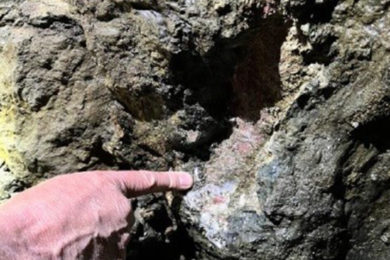The new compact digging arm loader from GIA Industri has been designed for 7 m2 cross-section tunnels and offers the option of electric or diesel power. Designed to operate in tunnels with a width of 2.5 m and the same height, this wheeled loader has a loading capacity of 2.5 m3/min. The 7HR features two unique digging arm systems – digging arms or rotating backhoe – to load muck from the drift face directly onto the Häggloader’s conveyor, which fills the haulage vehicle behind with a constant supply. The conveyor can be raised and lowered to suit the loading height of different haulage units. The backhoe version can also be equipped with a hammer for scaling the blasted profile.
The option of electric or diesel power source is offered for the Häggloader’s hydraulic system and for tramming and transportation. The hydraulic system can be powered by a 45 kW electric motor or a Stage III Deutz 58 kW diesel engine including a silencer and catalytic converter. The electro-hydraulic drive provides low installation and energy costs and maintains high air quality due to the absence of diesel exhaust. Diesel-hydraulic drive is used for transportation and also minor digging operations.
Featuring a four-wheel traction pull of 5,370 kW, the 7HR also offers front and rear axle steering for excellent agility plus the ability to travel sideways in confined spaces. As an option, a backhoe digging attachment can be easily fitted for trench work. A built-in sprinkler system effectively controls dust.
The Häggloader’s chassis and conveyor are made of heavy duty plate joined by continuous welds for maximum fatigue strength. The digging system can also be repaired with standard sheet steel.
The Häggloader is easy and smooth to operate and manoeuvre even in narrow or cramped spaces or passages. Control of the new 7HR is by PLC via a LCD panel and joysticks. The driver operates the loader from a protected compartment that offers lear overall visibility of the loading sequence. For longer development tunnels, the new compact-sized Häggloader can also reduce the number of passing/turning places required by traditional loaders.








